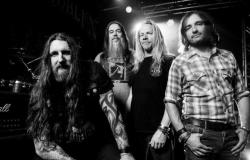We publish an excerpt from the first book by Francesca Fagnani “Mala. Criminal Rome” which will be released on Tuesday 30th by Sem, the day of the fifth and final episode of “Belve” on Rai2. This is a well-documented investigation that tells the dark epic of the emerging levers of the Roman underworld: Diabolik, the Michele Senese cartel, the historical and the emerging underworld. Fagnani (Sunday 28th guest of “Che tempo che fa” on the 9th) will present “Mala” on May 7th in Rome, at the Quirino Theatre, with the journalist Fiorenza Sarzanini, the Minister of the Interior Matteo Piantedosi, the deputy prosecutor of the National Anti-Mafia Directorate and anti-terrorism, Michele Prestipino.
Ostia is a city within a city, where criminal interests have always been very strong, above all due to its proximity to the port of Fiumicino and that of Civitavecchia where loads of drugs continuously arrive from South America and Spain, but also for maritime tourism, for the presence of the related commercial activities, beach establishments and state concessions, and finally because Ostia, since the 1980s, has been one of the strategic hubs for drug dealing in the capital. The epicenter is Piazza Gasparri, surrounded by extensive public housing complexes, which are another illegal source of income.
The many interests at stake and the presence in the area of numerous organizations of different origins – from the epigones of the Magliana gang to the Sicilian mafia, from the Fasciani to the Casamonica cousins, the Spada, from the Neapolitan batteries to those of the Albanians and Chileans, up to to old local glories still firmly on track – have always determined a very fragile balance, shaken by conflictual, perennial and karst pressures, which in some cases exploded in sensational bloody events, in others fueled low-intensity underground wars.
On several occasions, in the common interest and for the greater good of illicit trafficking, external intervention was necessary on the part of those who had the role and clout to do so. And who could compete with this role if not Michele Senese and Francesco D’Agati, known as Uncle Ciccio, the only ones who enjoyed the necessary recognition to present themselves as mediators and guarantors of a mafia agreement?
Uncle Ciccio, born in 1936, is the most important reference of Cosa Nostra in the Roman territory. Brother of the head of the district of Villabate and once right-hand man of Pippo Calò, he had moved to the capital, on the coast, exercising control over him from there, and then extending his influence over the entire city.
“Rome doesn’t want masters” it has always been said, even if the road and the investigations tell a completely different story, because it is always the same people who make the most important decisions. They are the ones who establish the drug loads and the price for the streets, who establish alliances and settle disputes, who grant protection or revoke it. And when this happens it can happen that someone fatally dies.
The writer met at the table of a bar in Ardea one of the two greatest plenipotentiaries of the Roman criminal balance and of the coast, the other obviously being Michele Senese. It wasn’t difficult to find him, because even the light poles in that municipality know Francesco D’Agati, uncle Ciccio, who in fact was there, sitting next to his elegant walking stick, in a bar where he was treated with respect and respect.
I introduce myself, I tell him that I am a journalist and that I am there to ask him some questions. He agrees and I open the notepad. He has an icy gaze, a welcoming and kind manner, he is not particularly talkative, he expresses himself with veiled phrases that contain and convey the whole meaning in a very narrow turn of words.
«Who is Michele Senese?» I ask.
«A good person» replies Uncle Ciccio. «The power he has is given by a life lived. He has a charisma, a following, which he uses in the most profitable way. In certain environments the esteem of others should not be bought or honored.”
“He’s still in charge?”
D’Agati provides an allusive response, but one whose meaning is clear and powerful: “We hope it comes out soon and fits into a context where it can be useful.”
«And what did you represent for Rome?»
“We were scary without seeing each other.”
At that point I ask him what his opinion was on Diabolik.
«What is the opposite of esteem?» he replies impassively with another question.
“You tell me.”
«Not much brains», continues Uncle Ciccio, still talking about Fabrizio Piscitelli. «Killed by a foreigner. Do you know what that means?” He is referring to the Argentine killer, Raul Esteban Calderon, who shot on August 7, 2019 in the Acquedotti park.
“No, I don’t know,” I reply. So I ask him what he means.
This time D’Agati doesn’t mince words: “That you don’t count for anything, that you are a small thing.”
«Yet Diabolik had been the guarantor of a mafia peace in Ostia, what can you tell me about this?»
«That the discontented in life are dangerous… ambitious projects without barriers. It takes patience and wisdom.”
“What does it mean?”
«That I prefer ghosts to a reality like this».
My time is over, I can’t ask for anything else, someone has arrived to pick up Uncle Ciccio to accompany him to dinner. He greets me kindly and leaves. When I get up to pay for my drink, the waiter tells me that everything is on offer and that I can order whatever I want.
I thank you and leave.
© 2024 SEM
© ALL RIGHTS RESERVED
Read the full article at
The messenger





